THE AUTHOR USED MINIMALIST BACKPACKING GEAR FOR HIS OVERSEAS ADVENTURES
What kind of people go on a planned adventure in the jungle? All over the world, there are guided trips to remote places in the jungle that require an overnight stay or a multi-day trip.
Destinations include places such as the Zambezi River in Africa and the jungles and rain forests of South America, Mexico, and Central America. Southeast Asia probably has the most overseas/jungle excursions out of Thailand, Indonesia, Malaysia, the Philippines, and Vietnam. Usually, some package deal provides transportation via van, boat, or elephant, and always with a local guide.
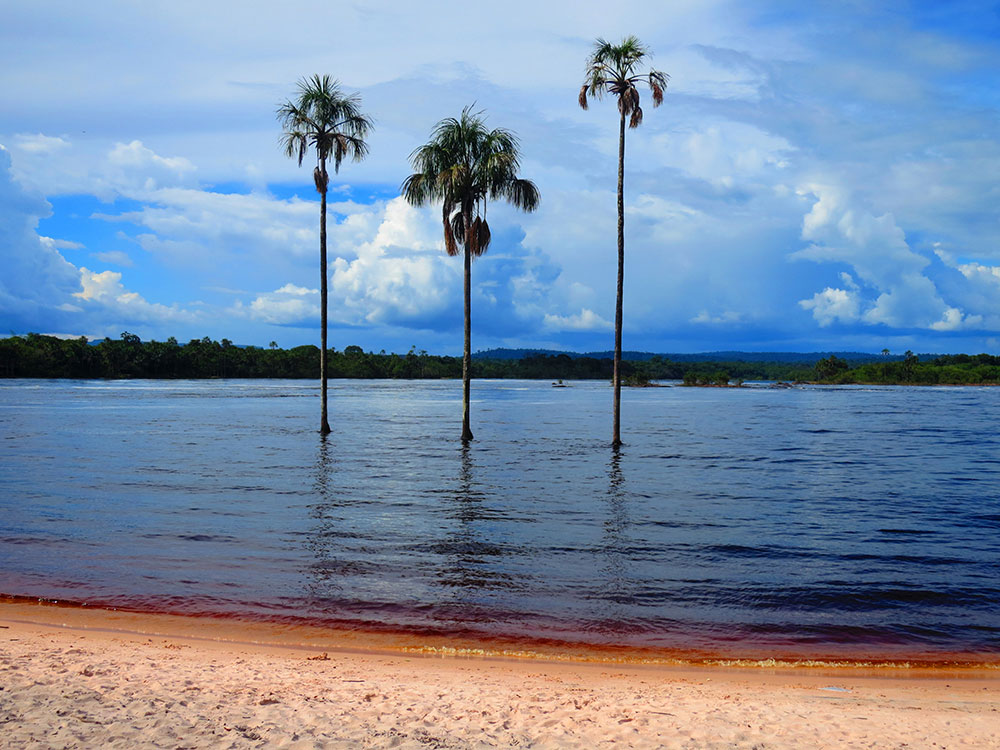
ENJOY THE JUNGLE
Most of the topics in any survival magazine gravitate towards an emergency survival situation where skills and minimal camping gear are used to get through the ordeal. Movies and reality TV shows about time spent in the jungle usually involve a person trying to escape.
This gives a negative aura to the beauty of the jungle. This preconceived notion is that the jungle is full of snakes, insects, headhunters, piranhas, crocodiles, and all things wanting to harm you. While that is not even half true, what is true is that just about any place in nature with inherent beauty also has a certain degree of danger.
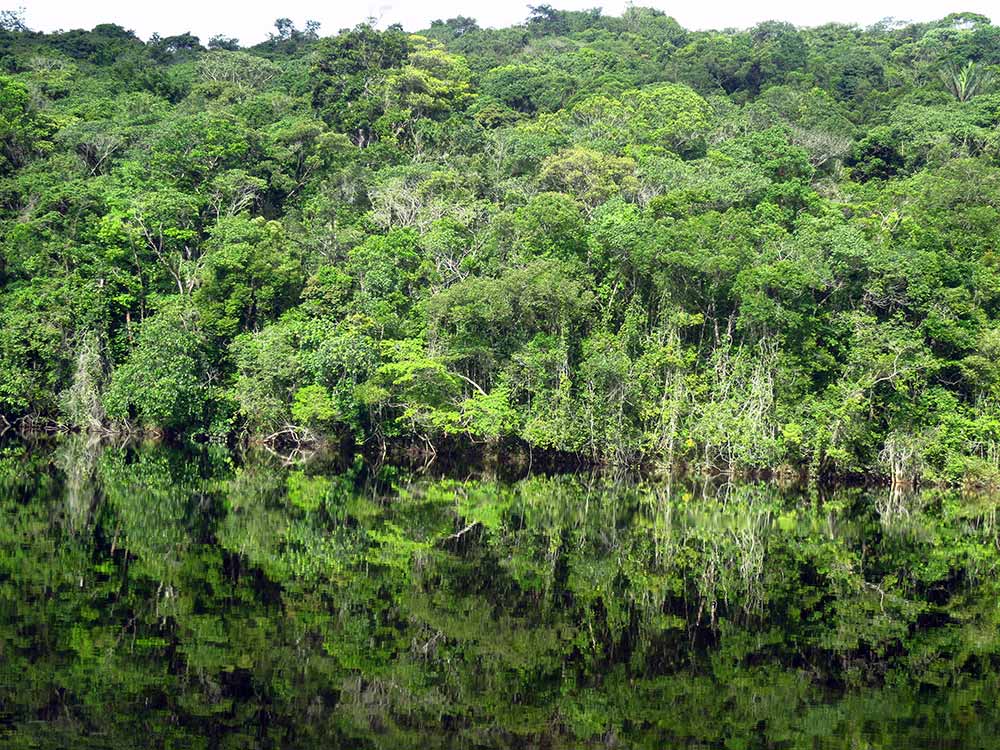
I have seen people with four knives strapped to them while toting a 30-pound pack—for a leisurely day hike. This mentality of setting out to battle nature puts the person in a paranoid mindset and makes them edgy, where they will be set off by noises or any wildlife they come across. Hardly enjoyable!
Having useful and lightweight camping gear makes any trip much more enjoyable. That “I must have everything” way of thinking holds a person back almost as much as the 30-pound-plus pack. I would like to help people shed that mentality and open them up to the fun adventures of overseas trekking, mainly in the jungle. I will touch mainly on the Big Four: backpack, shelter system, hydration, and tools.
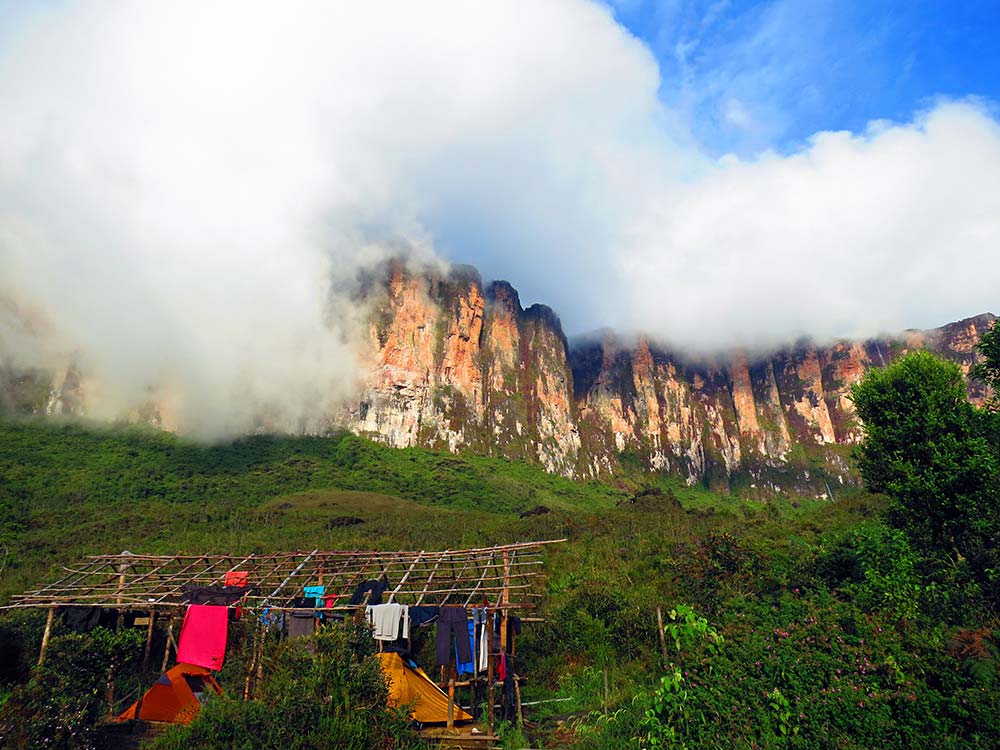
BACKPACK
Face it: as tourists visiting a new location, not much trekking takes place without a backpack. This goes for in or out of the wilds. Avoid large packs with a volume over 1,200 cubic inches. I have used packs of 900 cubic inches on a few trips with no problem. Anything like an over-the-shoulder school book bag or simple school backpack will suffice.
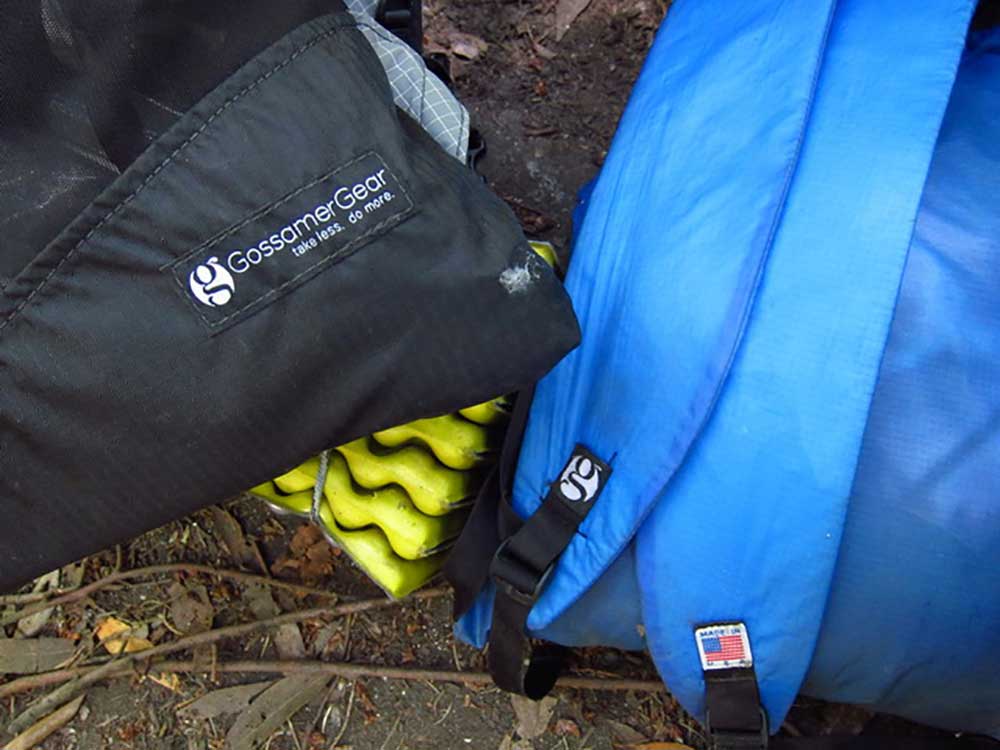
The backpacks I have used for years are from Gossamer Gear. Two packs come to mind that I have used in Southeast Asia and South America: the RikSak (900 c.i.) and the Minimalist (1,100 c.i. in main body/360 c.i. outside pocket). The RikSak is ultralight, weighing only two ounces empty. The Minimalist, when scaled down, comes to about seven ounces empty.
Both packs are meant to carry day hiking or overnight camping gear: overnight capacity with the RikSak or week-long with the Minimalist. Each pack has a simple, large compartment with a drawstring closure. Smaller packs help people reduce over-packing, allowing for the essentials and maybe some extra goodies.
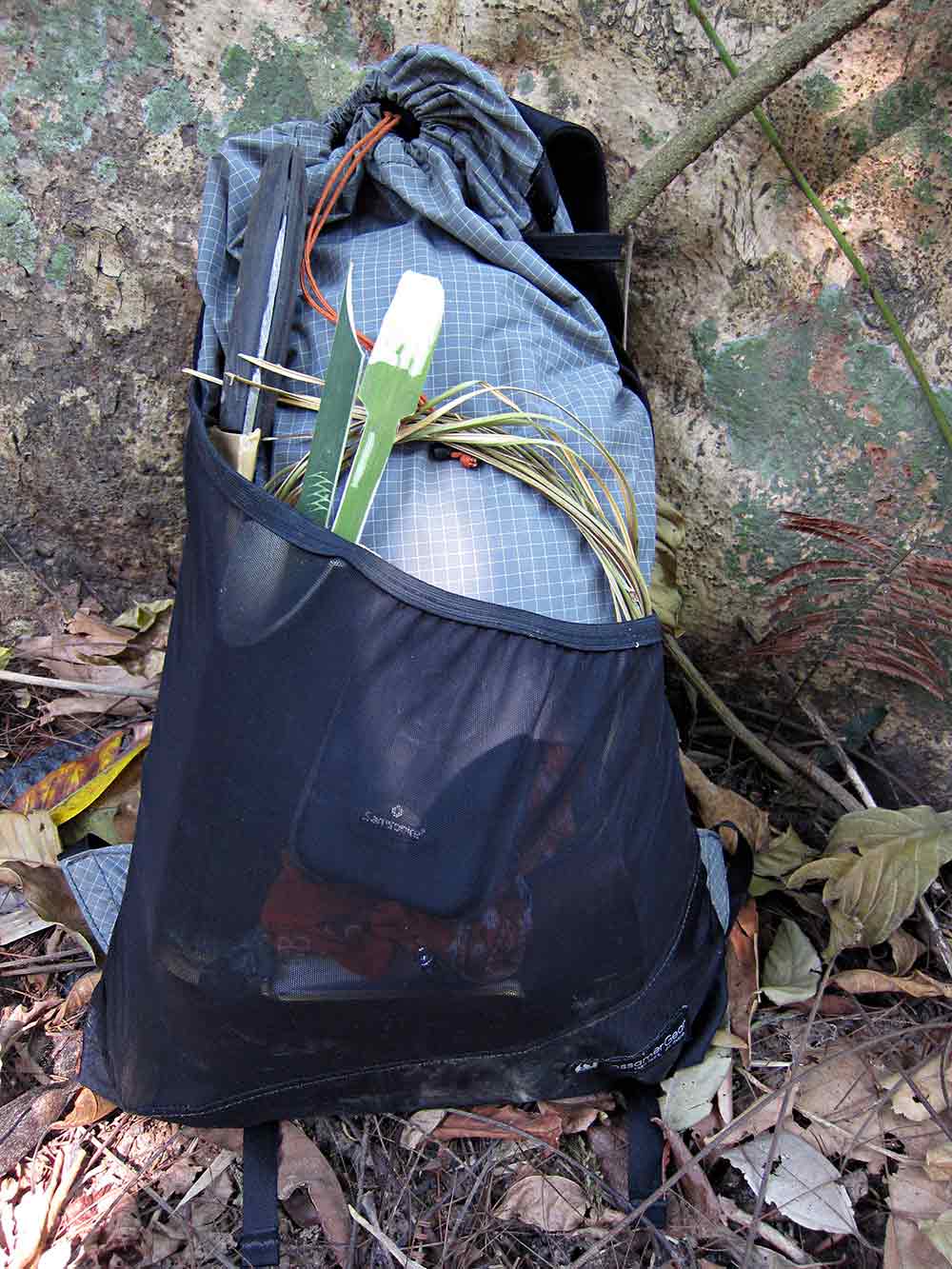
SHELTER
A good goal to strive for in the tropics is luxury. When it comes to a guided trip in the tropics, a hut or platform house with hammocks may most likely be provided. Either way, three separate things go into a good warm-weather shelter.
Hammock, tarp, and mosquito net are the way to go. You may be in for a less comfortable night without these three things. If anything, the cool airflow of a hammock is a much-needed relief from the heat. Try it out like any other camping gear before you use it to ensure it feels right.
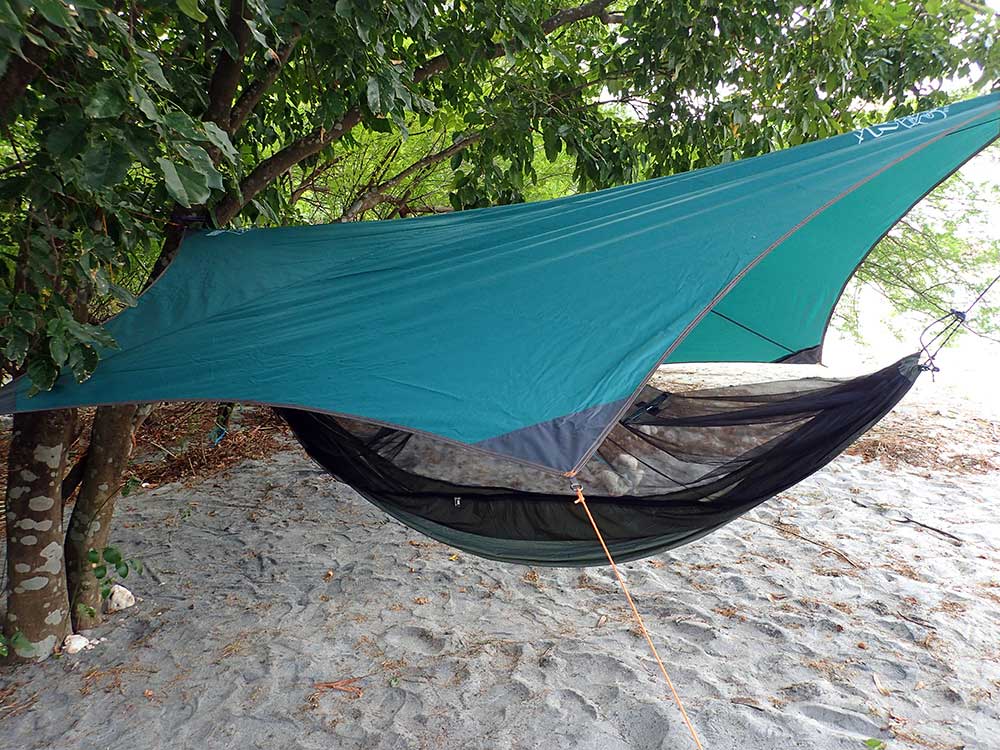
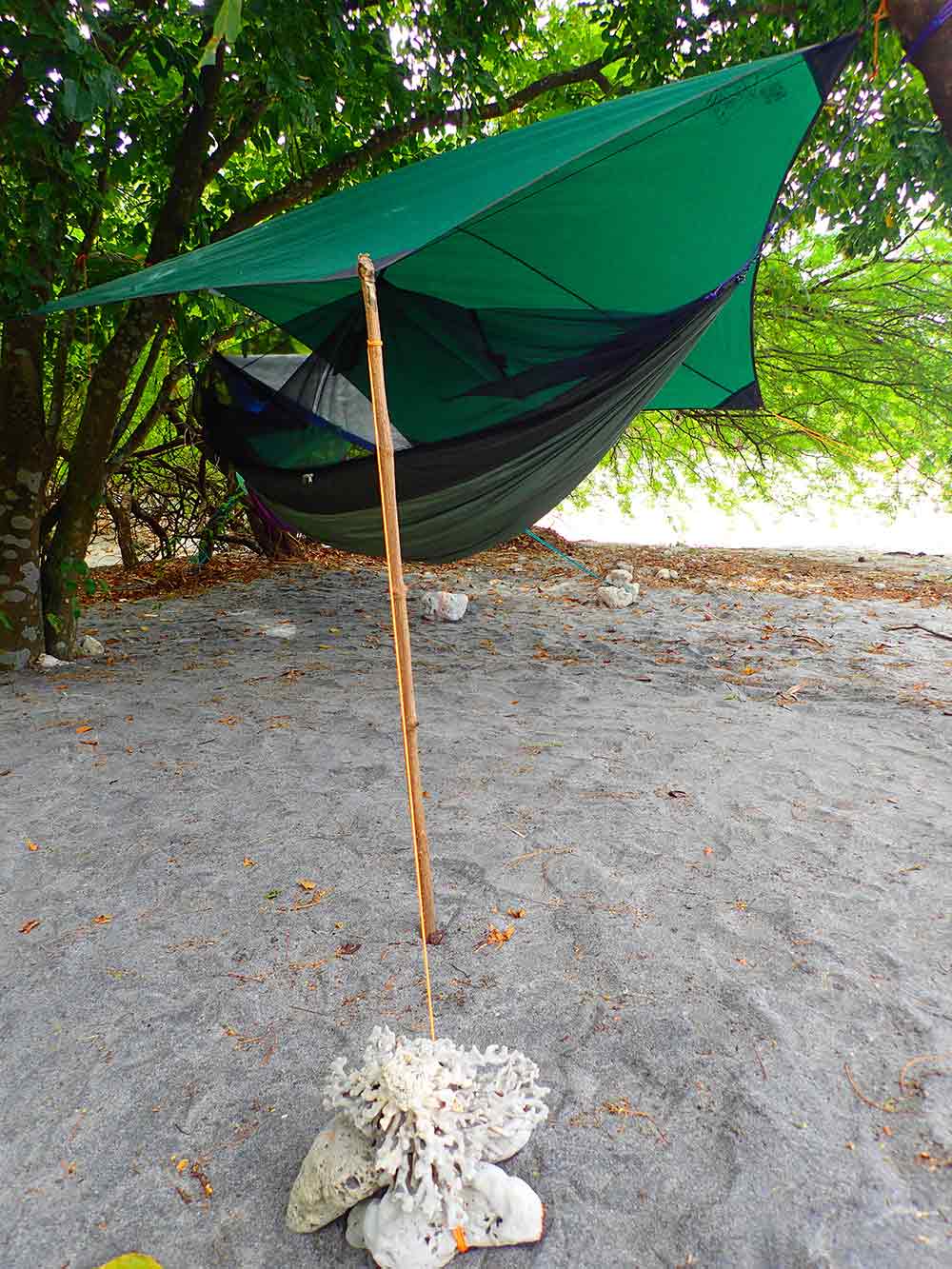
On the subject of tarps: keep one with you. I remember at least three occasions where we were supposed to camp in a waterproof place with a thatched roof; all we needed to do was string up our hammocks. Needless to say, I was getting dribbled on all night. Tarps are another portable way of carrying around your own portable rooftop.
A mosquito net in the jungle is a sine qua non. Without it, you will surely capture the essence of the Three Stooges all by yourself, slapping away all night while yelling out profanities. Sleeping without a bug net is bad with diseases such as malaria, Zika virus, and dengue fever. Get the right kind of net.
Take it out of the package and ensure it isn’t the type for draping over a bed; they usually have a large slit on one side. It must have tie-outs to make it easy to set up.
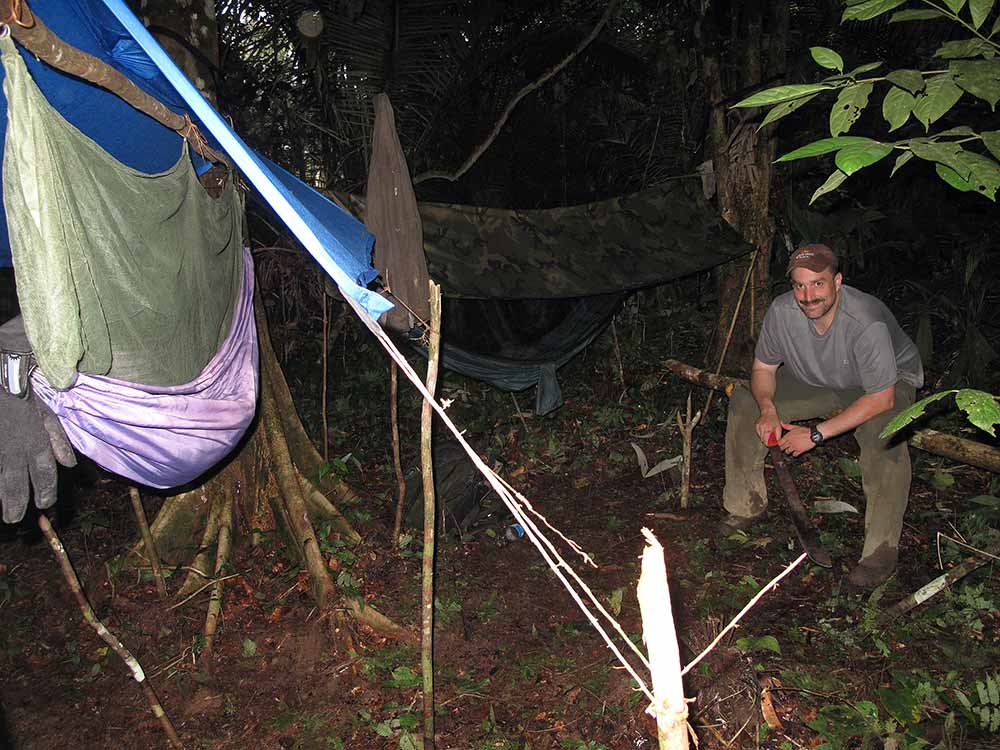
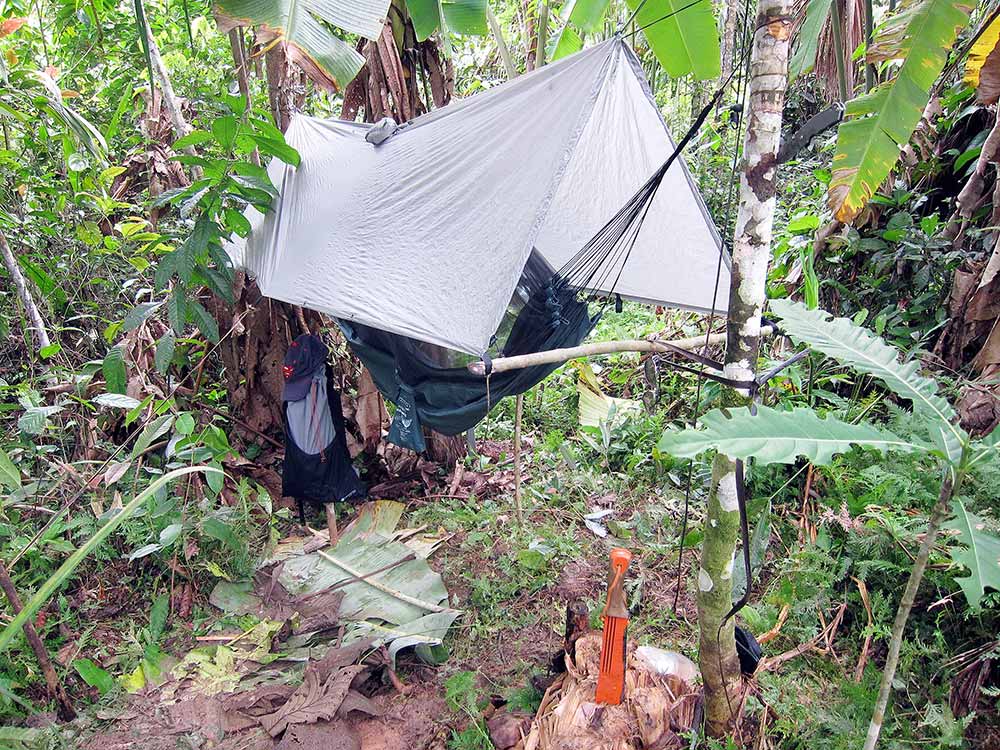
For over 10 years and counting, I have used hammocks by Byer of Maine due to their travel-friendly weight. One model in particular is the Traveller Lite hammock. It weighs about 11 ounces, and with it, I can add my own bug net/tarp combo and be well under two pounds.
Recently a newer model was released called the Moskito Kakoon hammock. This model has a built-in net to the Traveller Lite hammock. It weighs 16 ounces and is one less thing I have to set up. It isn’t the fanciest hammock out there, but it is easy to deal with and light.
HYDRATION
Don’t drink water from the streams and rivers like the locals. They have built up a tolerance for it over the years, but it will spell disaster for newcomers. I suppose I should say that water sits above all the other priorities just about everywhere you go. To stay hydrated, you must have means of safely treating water.
Stay away from stagnant pools of water; this is not always possible. Also, try to avoid waterways where there is activity from wildlife—again, not always possible. The last time I was in the Philippines, every stream seemed to have carabao (Asian water buffalo) resting in them. Luckily for us, we had a good supply of coconuts.
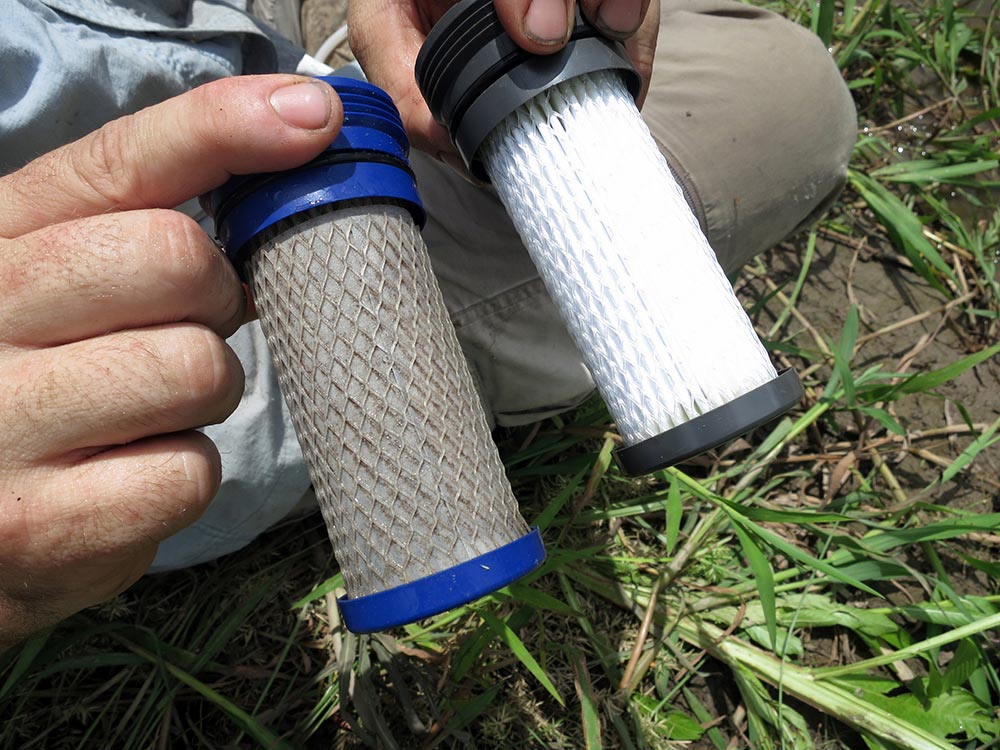
Three common ways of treating water are boiling, water filter, and chemical tablets. Water filters usually have between four to six uses before they are clogged up, depending on the amount of grit in the water.
Carrying water in the jungle is much the same as anywhere else. Make sure it is easily accessible and in a container that isn’t going to burst on you. Simple Gatorade bottles have a wide mouth and are durable. Plus, they come with a fruity drink that is good for you. I use a Platypus 2L hydration bag that doubles as a pillow, if needed.
TOOLS
Few people would deny the effectiveness of the long blade when it comes to multi-use tools on an overseas trip—in the jungle especially. It doesn’t matter if it is a machete, cutlass, Malaysian parang, Filipino bolo, Thai E-Nep, or Indonesian Golok—big blades rule! If you go on a planned trip to the jungle with a guide, they will most likely have a machete and will probably use trails.
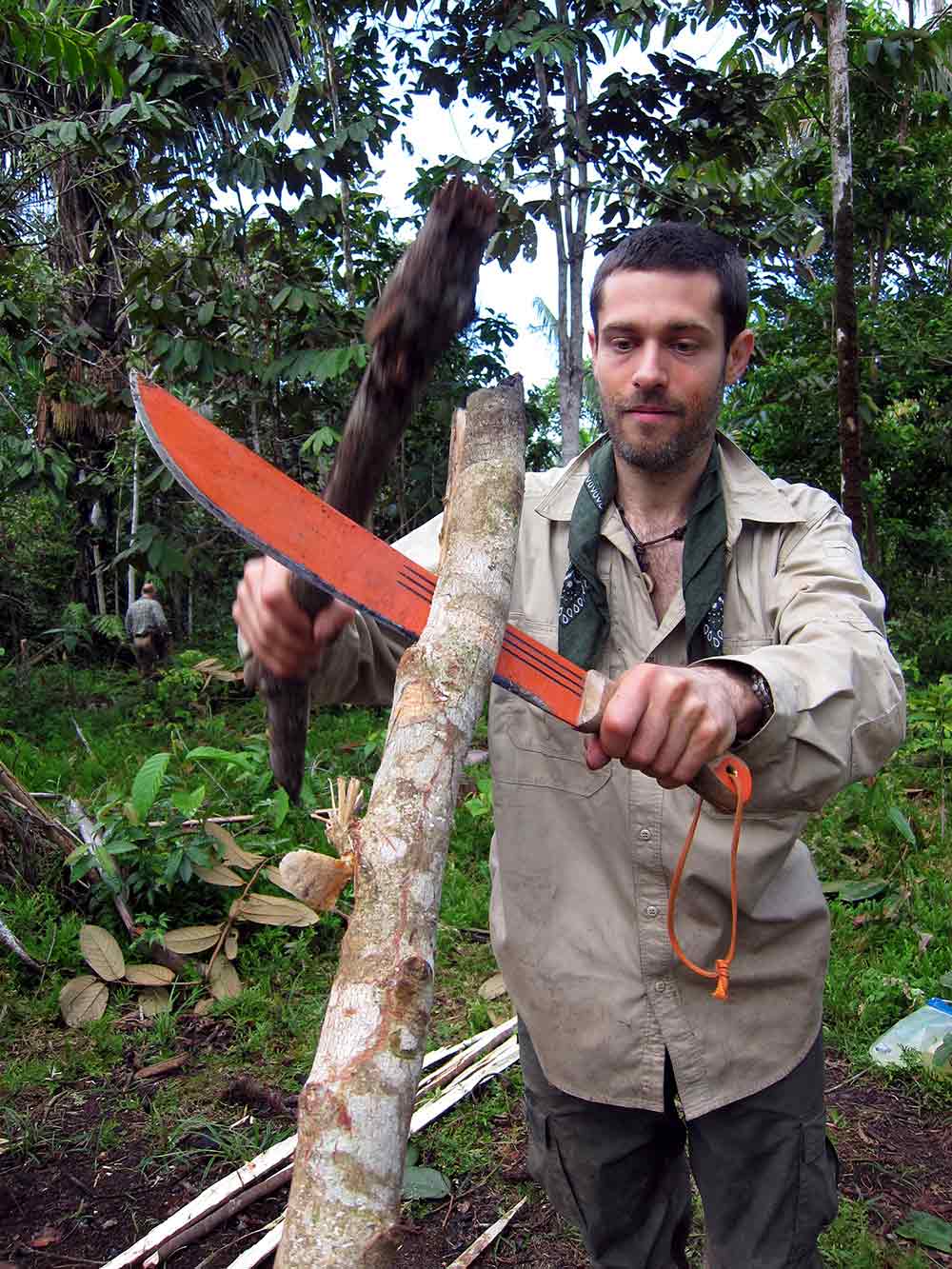
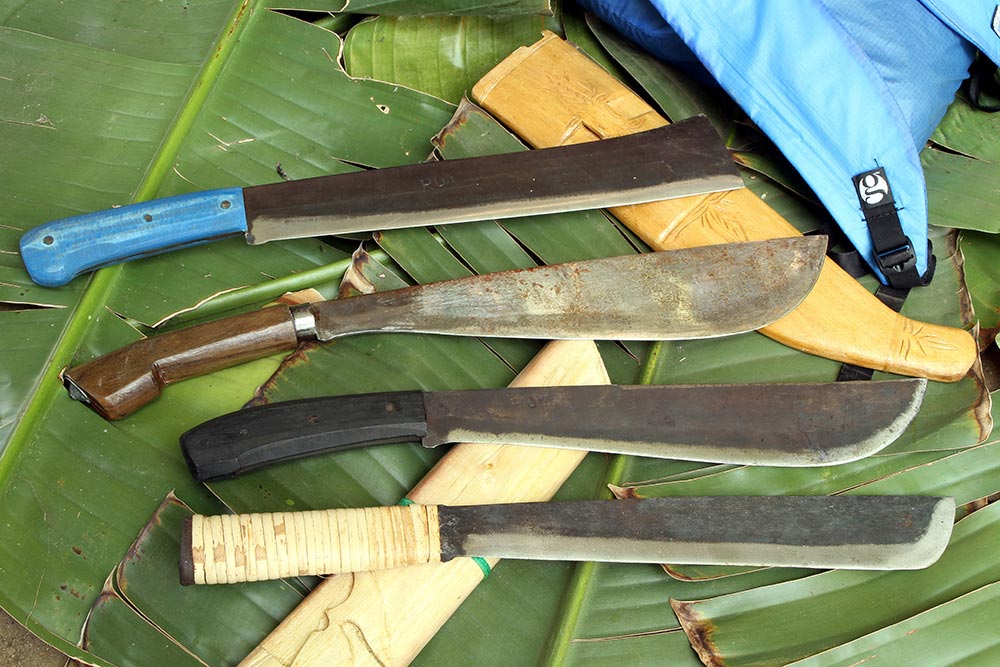
Individuals should always have their own pocket folding knife or multitool for most of the tasks one encounters in a camp. So, pick up a long blade locally; not only do they make good souvenirs, but buying one also helps the local economy.
ODDS AND ENDS
Little things make overseas travel a little easier. Antibacterial and antifungal cream should be first on the list. Hand sanitizer is good for obvious reasons, but more so for use on the feet at night. The alcohol dries out the feet, keeping them from becoming waterlogged. Imodium for diarrhea is something that always comes in handy—if not for you, maybe for a fellow traveler.
Carry at least one bright-colored article of clothing; this will help your chances if you get separated from the group and need to make your presence known boldly.
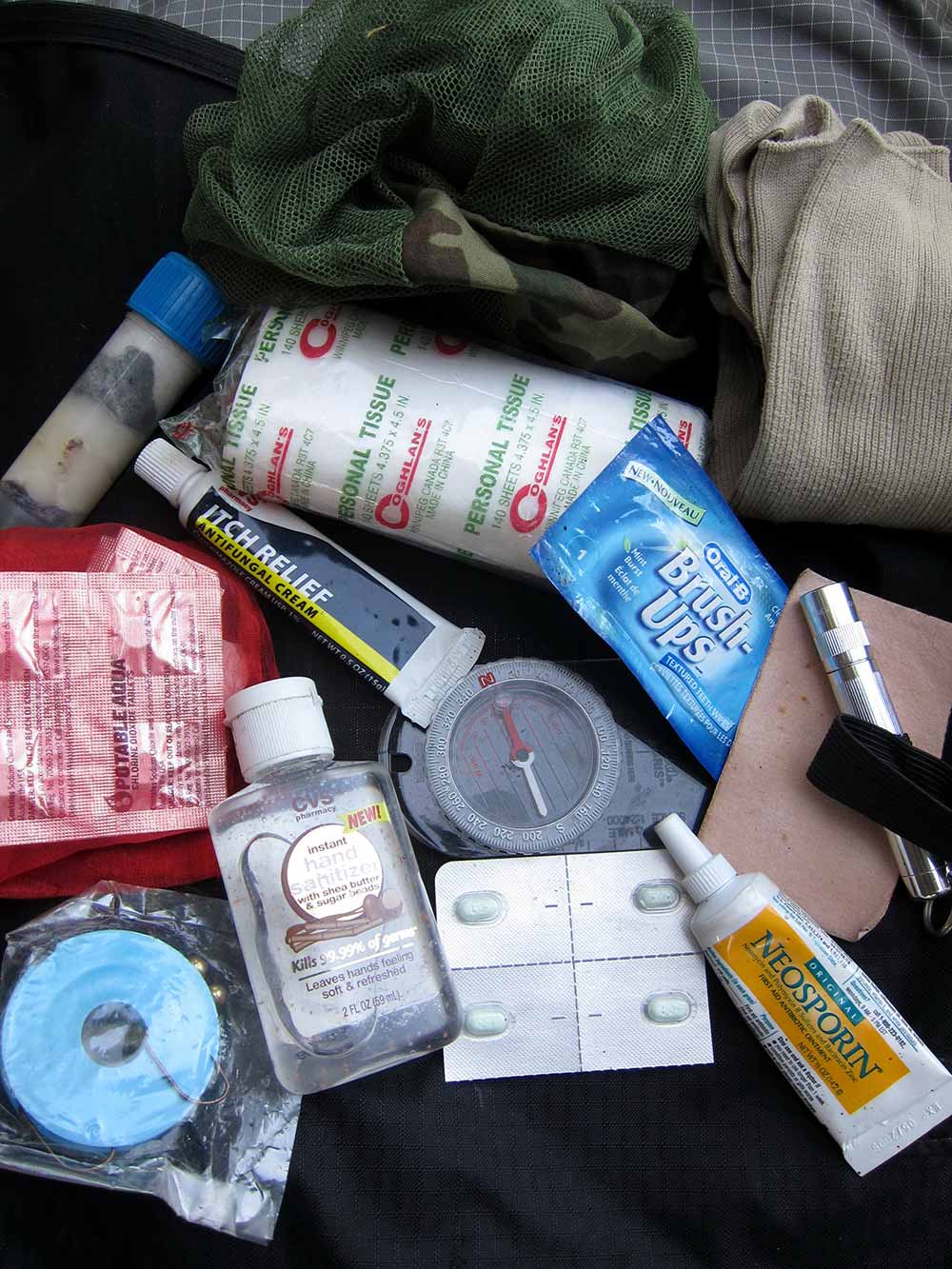
FOOTWEAR
Your feet are your number one personal priority in a planned overseas adventure. When traveling in regions of the jungle where black palms are present, like in Peru, I wear big, clunky boots with a Panama sole made by Altama. They have drain holes and squish the water out with every step.
They do work and protect the feet from all sorts of nastiness. In Southeast Asia, such as Thailand and the Philippines, I use Crocs. They are super durable, protect the toes and bottoms of your feet just enough, and dry out fast.
All guides and indigenous peoples wear flip-flops or Crocs in the jungle. Who am I to question what works for them?
Get out and see the world, keeping in mind being flexible is the key to successful travel!
THE SPECS
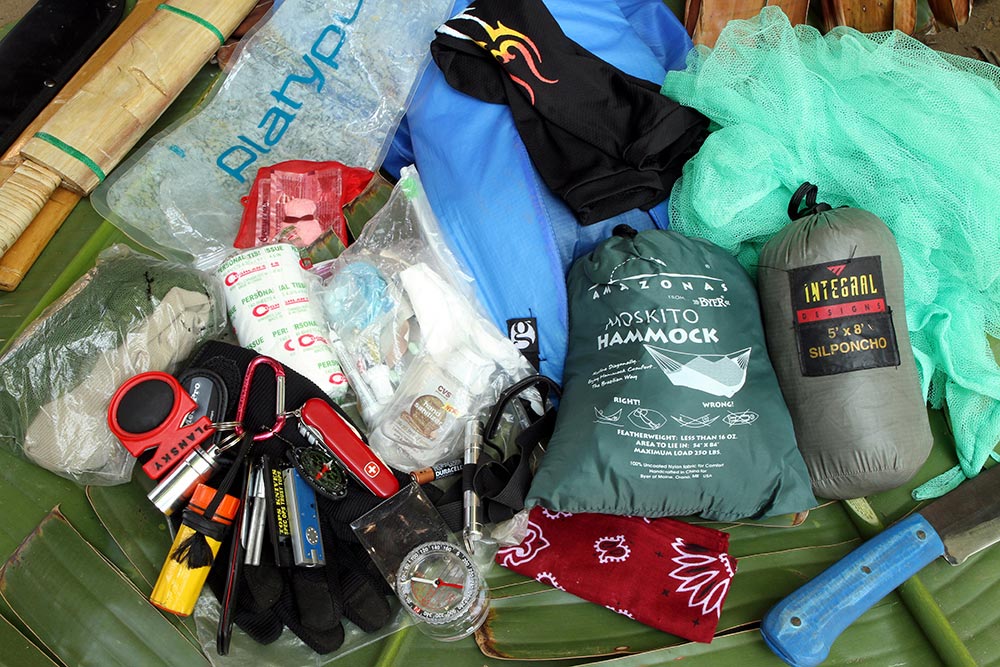
Moskito Kakoon Hammock
Color: Spruce Green
Dimension: 116 inches x 56 inches
Weight: 22 ounces
Approximate Hanging Point: 9-10 feet
Weight Capacity: 275 pounds
MSRP: $59.95
MicroRope
Color: Red/Blue
Length: 100 inches
Weight: 9.2 ounces
Capacity: 330 pounds
MSRP: $17.95
Traveller Rain Fly
Dimension: 132 inches x 108 inches
Color: Teal
Weight: 22 ounces
MSRP: $79.95
SOURCES
Gossamer Gear
www.GossamerGear.com
Byer of Maine
www.ByerOfMaine.com
Altama
www.Altama.com
A version of this article first appeared in the August 2022 issue of American Outdoor Guide Boundless.

